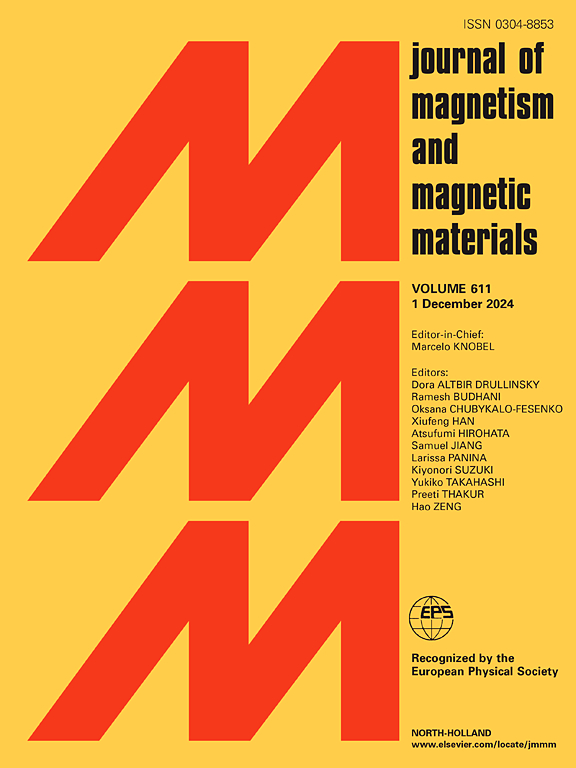The contribution of spin fluctuations to resistivity in B20 metals MnSi and MnGe
IF 2.5
3区 材料科学
Q3 MATERIALS SCIENCE, MULTIDISCIPLINARY
引用次数: 0
Abstract
Mn-based metallic helimagnets (MnSi and MnGe) were studied by detailed measurements of electrical resistivity at temperatures 2–300 K and magnetic fields up to 8.2 T. To interpret the data the procedure of ρ(T) analysis was applied. The approach presented here is based on River-Zlatic model [N. Rivier, and V. Zlatic, J. Phys. F: Met. Phys. 2, L87 (1972)]. The decomposition performed allowed identifying along with electron–phonon component the additional one caused by the scattering of electrons on localized spin fluctuations (LSF). It was shown that the last contribution plays significant role not only in paramagnetic (PM) but also in magnetically ordered states of compounds under investigation. Spin fluctuation temperature was estimated as θlsf(MnSi) ≈ 120 K and θlsf(MnGe) ≈ 250–300 K. This model may be applied to the resistivity analysis in other d-metallic systems.
求助全文
约1分钟内获得全文
求助全文
来源期刊

Journal of Magnetism and Magnetic Materials
物理-材料科学:综合
CiteScore
5.30
自引率
11.10%
发文量
1149
审稿时长
59 days
期刊介绍:
The Journal of Magnetism and Magnetic Materials provides an important forum for the disclosure and discussion of original contributions covering the whole spectrum of topics, from basic magnetism to the technology and applications of magnetic materials. The journal encourages greater interaction between the basic and applied sub-disciplines of magnetism with comprehensive review articles, in addition to full-length contributions. In addition, other categories of contributions are welcome, including Critical Focused issues, Current Perspectives and Outreach to the General Public.
Main Categories:
Full-length articles:
Technically original research documents that report results of value to the communities that comprise the journal audience. The link between chemical, structural and microstructural properties on the one hand and magnetic properties on the other hand are encouraged.
In addition to general topics covering all areas of magnetism and magnetic materials, the full-length articles also include three sub-sections, focusing on Nanomagnetism, Spintronics and Applications.
The sub-section on Nanomagnetism contains articles on magnetic nanoparticles, nanowires, thin films, 2D materials and other nanoscale magnetic materials and their applications.
The sub-section on Spintronics contains articles on magnetoresistance, magnetoimpedance, magneto-optical phenomena, Micro-Electro-Mechanical Systems (MEMS), and other topics related to spin current control and magneto-transport phenomena. The sub-section on Applications display papers that focus on applications of magnetic materials. The applications need to show a connection to magnetism.
Review articles:
Review articles organize, clarify, and summarize existing major works in the areas covered by the Journal and provide comprehensive citations to the full spectrum of relevant literature.
 求助内容:
求助内容: 应助结果提醒方式:
应助结果提醒方式:


